If you enjoy winter fishing in the Mid-Atlantic region you might just be thinking: to heck with a Christmas goose, what better meal could there be to celebrate the holiday season with than fresh fish? Crabs maybe, but that’s no longer an option unless you’re willing to stoop to eating imports from the Carolinas or Texas. Save that desperation move for mid-February and instead set a heaping helping of fresh fillets on the table. Or, maybe you’d prefer to at that goose after all, and just enjoy a day of winter-time catch and release fishing. It’s not as tall an order as one might think, because truth be told there are plenty of fish to go after in the Mid-Atlantic region during the month of December and on through the winter.
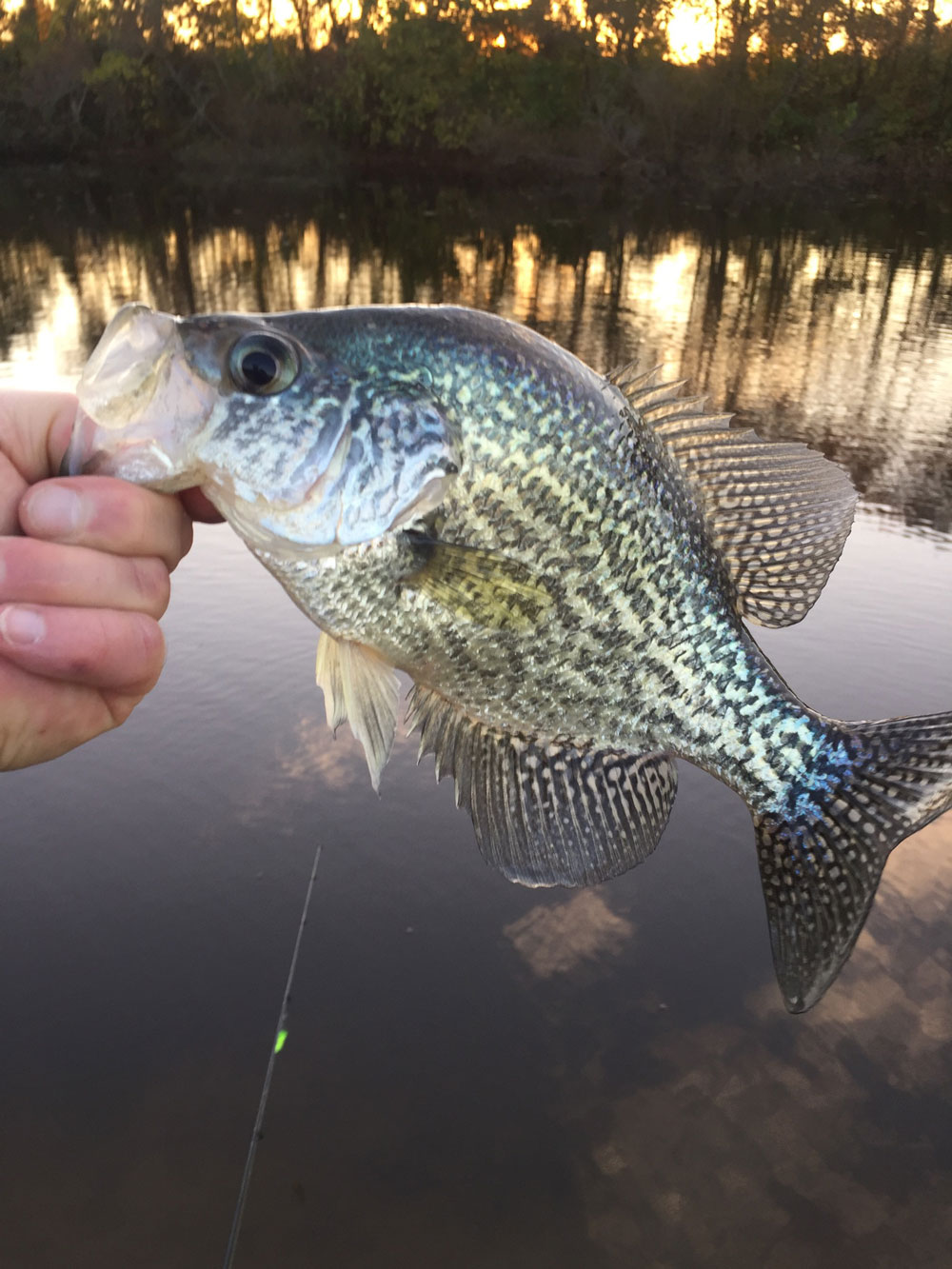
Winter Crappie Fishing
Crappie will be hitting in upper tidewater tributaries, Eastern Shore millponds, and reservoirs throughout the region as long as the water isn’t iced over. And while they may not exactly be a glory fish, they make some excellent fish nuggets when breaded and fried.
Hit tidewater areas like the North East river up north, the Tuckahoe or upper Nanticoke on the shore, or the Pamunkey, Mattaponi, or upper James down south. You’ll do best if you have a small boat (jon boats in the 14 to 16 foot range are perfect for tight waters with small ramps) and stay on the move until you find fish. Tidewater crappie often school tightly in very specific areas, and you may fish a bank strewn with deadfall without a single bite, then get to one particular log and fill the cooler. Anglers limited to shore should try to access an area with the most structure possible (such as where a bridge crosses the river and you can cast to the pilings) or where they can (legally) walk the shoreline and hit multiple locations.
In Eastern Shore millponds, again you’ll want to focus on structure. Quite often the crappie in the ponds won’t move an inch from their preferred ambush points and the best way to get them is to creep in close, stretch your rod out with four or five feet hanging from the tip, and dab your offering right next to the tress or brush. Note: The millponds in and around Salisbury are littered with nice crappie, and should be considered a prime destination.
Reservoir anglers have it a bit tougher, as in many areas (though not all!) the water will be closed to boats. Whether you’re fishing from a boat or shore, once again, getting in tight to structure is what it usually takes to seal the deal. Bridge pilings are prime targets. In these areas search out places where the structure is adjacent to relatively deep water, remembering that as it gets colder and colder, the fish will likely shift deeper and deeper. You’ll also often find them suspended at mid-depths during this time of year. Live minnow are tough to beat in the chilly water, and crappie like small minnow best. A shad dart tipped with a GULP Micro, jigged with a quivering motion, is also a good bet.
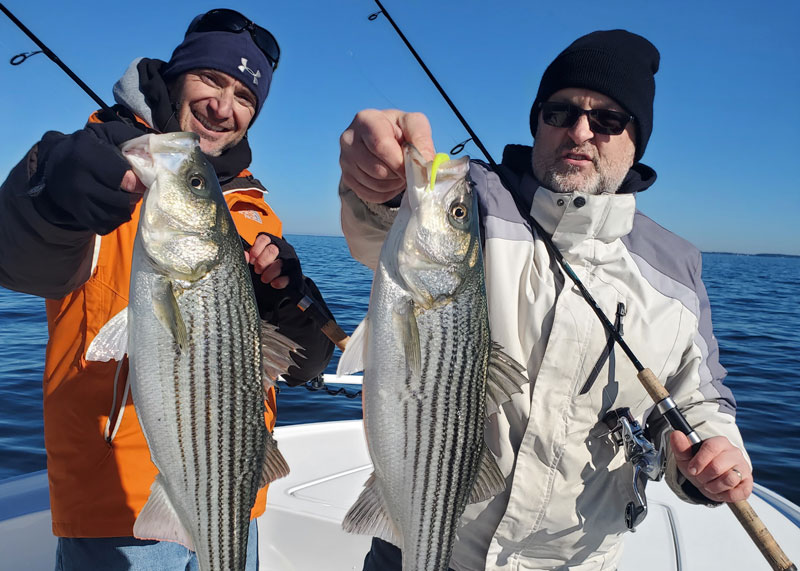
Winter Striped Bass Fishing
Striped bass will still be biting as winter sets in, just remember to check the legality of keeping one, which changes from state to state and bay to ocean. The best areas to target stripers once winter hits are often along the coast; check out DelMarVa's Coastal Inshore Fall Fishery, to get the scoop on how to target those ocean-run rockfish.
Whether stripers in the open Bay will still be biting as you read this (and at the time this was published, they certainly were!) depends on the weather and the water temperatures, but anglers will also begin having action this month at warm water discharges like Brandon Shores near Baltimore and Calvert Cliffs in the Middle Chesapeake. Just how good that action is depends on the weather and the fish, and it can vary quite a bit from season to season. Naturally, keeping your eyes on our weekly reports on the web site is the best way to figure out when this fishery is worth taking a shot.
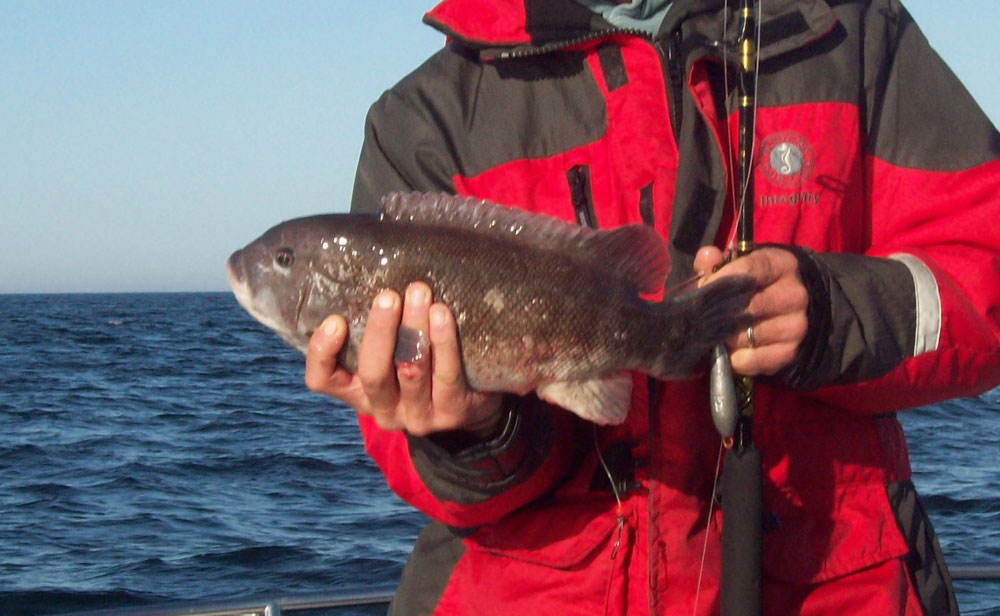
Winter Tautog Fishing
Tautog are an oceanic species that remains available to anglers willing to brave cold and potentially even snowy conditions along the coast. They’ll be found tight to structure, with wrecks and artificial reef sites topping the go-to list. They’re also a good option to try at the CBBT. If you missed it, be sure to see Tautog Fishing: These Fish Like it Cold, by our Coastal Correspondent John Unkart, which gets into the details of tog fishing.
No matter where you go after tog, remember that crab and sand fleas are the baits of choice, usually green crab for larger specimens. Two-hook “snafu” rigs are the norm, and bring lots of extra tackle because if you’re not getting snagged on a regular basis, you’re not dropping your baits where these fish live. Also remember that tog may go in and out of season through the winter depending on where you fish; check the local regs to be safe.
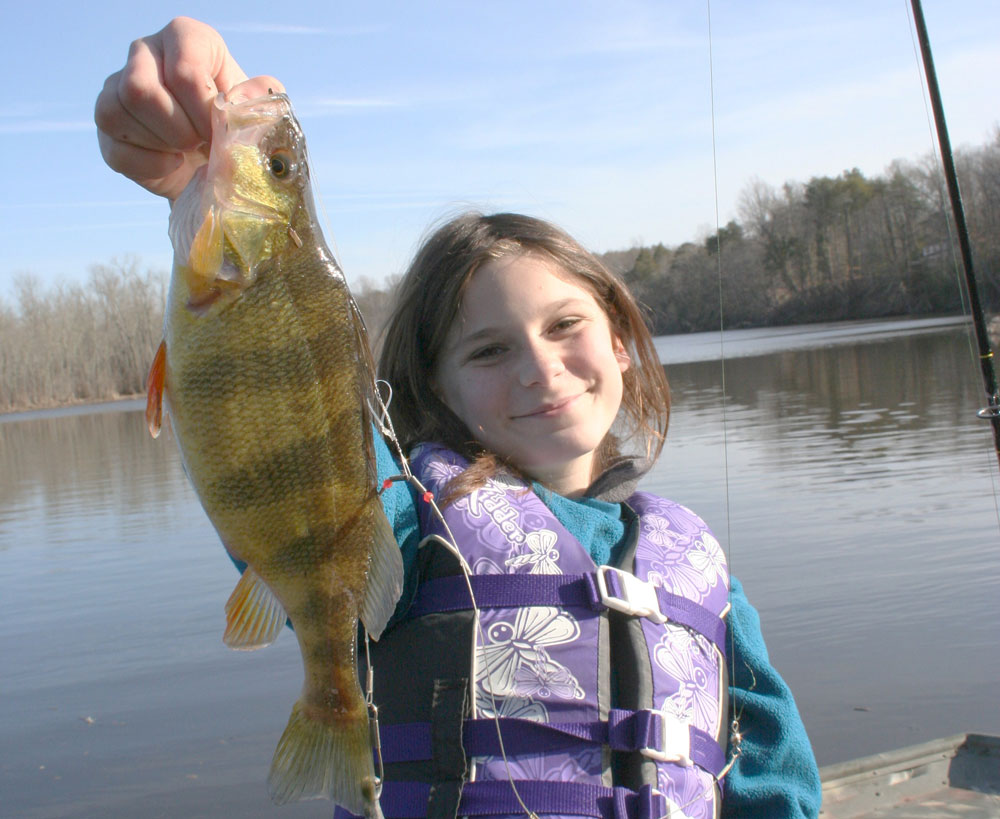
Winter Yellow Perch Fishing
Yellow perch are another tidewater treat. Particularly in the Bay’s northern reaches (Lapidum, Perryville, the North East) they tend to show up here a bit earlier than in many other tidewater hotspots (the creeks of the Potomac, Rappahannock, and Pamunkey, and most of the Eastern Shore tributaries). Yellow neds are also present in many of our area reservoirs in good numbers, and will willingly bite at Deep Creek as long as there’s open water (or ice thick enough to stand on, for that matter). Most of the reservoirs throughout the area have yellows, and Lake Moomaw is particularly well-known for its excellent perch-jerking. Pennsylvania and northern Maryland anglers also have a perch option at Lake Marburg, which doesn’t have huge numbers but does tend to produce large perch.
The most effective tactics vary a bit from place to place, but there are a few particulars that hold true: it’s tough to beat live minnow, and unlike those crappie, yellow perch prefer a relatively large bait. In fact, the biggest minnow in the bucket is usually the best one to choose, when targeting this species. In tidewater areas many anglers simply cast a bottom rig with lip-hooked bull minnow. In freshwater shiners usually fill the minnow bucket, and are often used to tip a dart or marabou jig, or can be fished on a bare hook weighted down with a split shot or two.
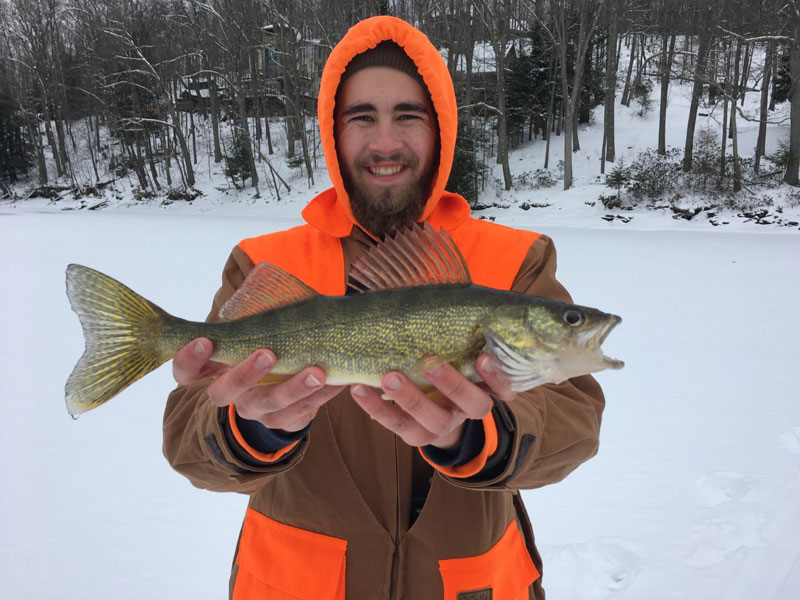
Walleye isn’t a species many Mid-Atlantic anglers focus on, but between Lake Marburg, Deep Creek, and the upper Potomac (up-river of Dickerson and especially above Harper’s Ferry) your chances of catching a few fish are actually pretty strong. And walleye thrive in cold conditions, often biting better at this time of year than during the warmer months. In fact, some anglers swear they catch more walleye while ice fishing than in open water. Added bonus: as a food fish, the firm, sweet fillets of a walleye are tough to beat.
The key to locating this species is usually finding relatively deep water in and around rocky areas. Walleye love hunting around boulders, rock faces, and rip-rap. Shiners are always a prime bait, but crankbaits and jigs will get ‘em, too. Lipped plugs of three to five inches are particularly effective in areas where they can be slow-trolled from a boat. Shoreline anglers are usually best off tossing out a shiner—bigger is better—on a hook weighted down by no more than a split shot. When fishing live baits for walleye always remember to give them plenty of time before setting the hook (a 10-count is not out of line) because they often hold a shiner in their teeth for quite a while, before turning to eat it.
This winter, like any, you have gobs of fishing options. In fact, these five species are a mere peek at the many opportunities you have to get out and catch some fish. So bundle up, grab those pocket warmers and a big thermos of hot coffee, and head for the water. The geese will thank you.
Editor's Note: this article was originally published in November of 2017 and was last updated in December of 2024.